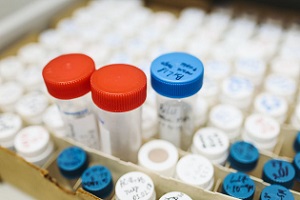5 Inspections for Necrospermia Diagnosis
Date:2021-08-03 click:0
Necrospermia is one of the most difficult male infertility disease to treat. It troubles many males and has a great impact on their lives. It is necessary to check and treat in time, and it is very matter to check azoospermia as the basis for treatment. So what kind of tests should be done for necrospermia diagnosis?The main inspections for necrospermia:

1. Endocrine examination.
For patients with azoospermia, serum and tests between FSH and T should be performed first. If both values are normal, no further endocrine tests are required. If the T value is lower than the normal level, LH and prolactin tests should be performed examine.
2. Semen examination.
The result of the semen examination is the basis for the azoospermia diagnosis. Generally, 2 semen specimens are collected after 2-3 days of abstinence. The amount of semen is also significant. In clinical examination, the main reason for the small amount of semen is incomplete semen collection. Therefore, it is routinely required to collect 2 specimens.
3. Genetic inspection.
With the rapid development of molecular biology technology, many studies have found that patients with non-obstructive azoospermia or severe oligospermia have microdeletion in the AZF region of the Y chromosome, which confirming that the AZF region gene deletion is a cause of spermatogenesis. So, genetic examination is very necessary.

4. Testicular biopsy.
Testicular biopsy is helpful to distinguish OA from NOA, and it can also find some potential lesions of the testis, such as intertubular germ cell tumor, Frank seminoma and so on. There are two main methods of testicular biopsy: scrotal incision biopsy and needle biopsy. Both of them have their own advantages and disadvantages. The former damages the testis more, but can obtain a larger amount of tissue, which is conducive to make a correct pathological diagnosis; the latter is convenient to operate and has little damage to the testis, but the obtained tissue is less, which may affect diagnosis.
5. Medical history and physical examination.
Through medical history and physical examination, relevant factors can be obtained, such as reproductive system infection, alcoholism, high temperature work, etc. Generally, there are no specific signs, and it is mainly secondary to patients with inflammatory lesions such as prostatitis, seminal vesiculitis and orchitis.
Males should maintain healthy and reasonable living habits in their daily lives. Once the symptoms of azoospermia are found, actively check and diagnosis in time to avoid delaying the best treatment opportunity.

Treatment of necrospermia:
1. Medication.
TCM herbal medicine treatment is of great help to the alleviation of necrospermia. Patients with necrospermia can be treated with herbal medicine Diuretic and Anti-inflammatory Pill. This herbal pill also has many amazing functions like promoting Qi, activating blood circulation, dissolving lumps, dissipating stasis and improving immunity and self- healing ability, so the cure rate is high and the relapse rate is low.
2. Daily care.
In addition to the above-mentioned treatment measures, exercise, quitting smoking, quitting alcohol, mentally relaxing, eating more green vegetables, and often going to the hospital for appointments for prostate examinations can also effectively treat necrospermia.
3. Psychotherapy.
A number of adjuvant treatments are adopted to provide professional guidance on the patient's thoughts, psychology, diet, timing of conception, etc. Experienced senior experts conduct thorough psychological communication to achieve the goal of simultaneous treatment of the body and mind.
4. Surgery.
For cryptorchidism and varicocele, patients with necrospermia can be treated with surgery.
Recommended Readings:



